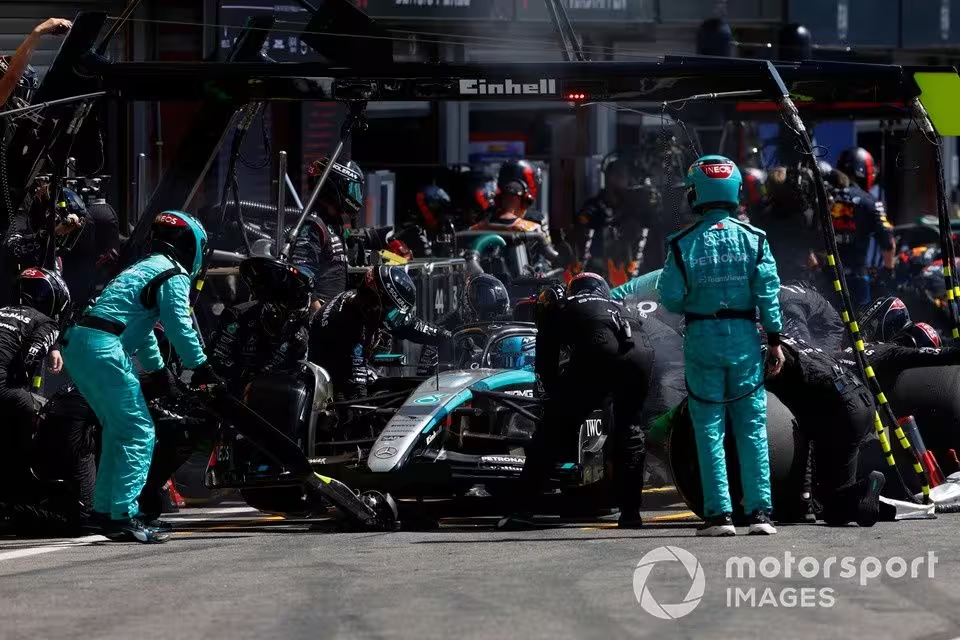George Russell’s disqualification for his Mercedes being underweight caught his team by surprise after Formula 1’s Belgian Grand Prix.
Indeed, with no obvious smoking gun, such as a missing car part, it had no immediate answer as to how it had ended up in the situation it did.
Some factors that may stand out as immediate considerations – such as Russell having burned more fuel because the Belgian GP had no safety car nor VSCs – can be discounted because car weight is taken without any fuel weight on board.
Instead, in its own submission to the FIA stewards, Mercedes noted that there was an error with some other calculation.
The FIA document stated: “The team acknowledged that there were no mitigating circumstances and that it was a genuine error by the team.”
But as the team begins its analysis as to how it ended up with a car that was 1.5kg underweight at the end of the race, there is already a suspicion that the main contributing factor could be Russell’s tyres – and the consequences of him doing the one-stop strategy that helped him take victory on the road.
George Russell, Mercedes F1 W15, makes a pit stop
Photo by: Steven Tee / Motorsport Images
Russell’s charge to the chequered flag came as the result of him electing to skip a second pit stop that most of his rivals went for.
He had originally pitted as early as lap 10 for a fresh hard and, as the pace looked consistent and degradation not too bad, the door opened for him to run until the end.
Russell was able to pull it off and briefly looked like having executed a clinically brilliant performance of tyre management on a day when an extra stop would have ensured he managed no better than fifth.
That decision to run those tyres for 34 laps may, however, be the very thing that ultimately cost him the win because there were weight consequences from doing so – as tyres wear down (and therefore lose mass) the longer they are run.
This was something that Mercedes trackside engineering director Andrew Shovlin said had emerged as an early theory as to what went wrong.
“We don’t yet understand why the car was underweight following the race but will investigate thoroughly to find the explanation,” he said.
“We expect that the loss of rubber from the one-stop was a contributing factor, and we’ll work to understand how it happened.
“We won’t be making any excuses though. It is clearly not good enough and we need to make sure it doesn’t…
Click Here to Read the Full Original Article at Motorsport.com – Formula 1 – Stories…

